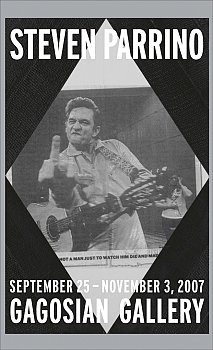Schwarz
View current page
...more recent posts
The architect Andrew Geller gazed up at the beach house's soaring glass windows, the walls that angle inward, the catwalk jutting toward the ocean, and marveled.
"I'll be damned, it's still here," he says.
Geller, now 83, had gained fame in the '50s and '60s for small and startling modern beach houses that set cubes on edge, angles atilt and conventions aside. Now, on the day after Labor Day with a sky as blue and bright as anyone visiting a beach house could wish for, he had come to visit this house built on a high sandy hill in the Pines on Fire Island in 1961. Known as the Frank House, it had just undergone a three-year renovation by its current owner, Philip Monaghan, 52, working with architect Rodman Paul, who restored it to its original form.
steve parrino is in the midst of a big posthmous comeback
"the black mark", Palate of Tokyo, 13, avenue of President Wilson, 75116 Paris, 01 47 23 54 01, www.palaisdetokyo.com, of May 24 at August 26
III: Steven Parrino, 13 Shatterd Panels for Joey Cleans, 2001, panels of placopl‚tre, Collection Parrino Family, Courtesy Gagosian Gallery, New York
nickas discusses the situation in the september issue of artforum
Britons and the Irish can still down a pint of beer, walk a mile, covet an ounce of gold and eat a pound of bananas after the European Union ruled today that the countries could retain measurements dating back to the Middle Ages.
Under a previous European Union plan, Britain and Ireland would have been forced to adopt the metric system and phase out imperial measurements by 2009. But after a vociferous antimetric campaign by British skeptics and Londonís tabloid press, European Union officials decided that an ounce of common sense (or 28.3 grams) suggested that granting a reprieve was better than braving a public backlash.

In 1950, at 83, Frank Lloyd Wright designed a house for a private island on Lake Mahopac, about 50 miles north of New York City. He dreamed it might surpass Fallingwater, his 1935 masterpieceóbut then the client ran short of funds, and the house was shelved for almost 50 years. Now, after eight years of planning and construction, the house is finally completeó5,000 spectacular square feet of mahogany, lake stone, hand-troweled cement, and triangular skylights.
But no house, least of all a posthumous construction from the twentieth centuryís most famous architect, is an island, and this one has become a particularly hot piece of intellectual real estate. There are those who celebrate its realization: Itís used in the packaging of the Apple-based architecture software that helped bring the design to life and is the subject of an upcoming PBS documentary. And there are its haters: architects, scholars, and amateurs who say itís not Wrightís real visionóthe stones jut too much, the skylights should be flat, not domed, and so on. As it stands, the house is officially unofficial. The Frank Lloyd Wright Foundationís chief executive officer, Philip Allsopp, states bluntly, ďItís not a Frank Lloyd Wright house, because it hasnít been certified by the foundation.Ē
"quiet" night
35 years of construction in 10 seconds
via vz


